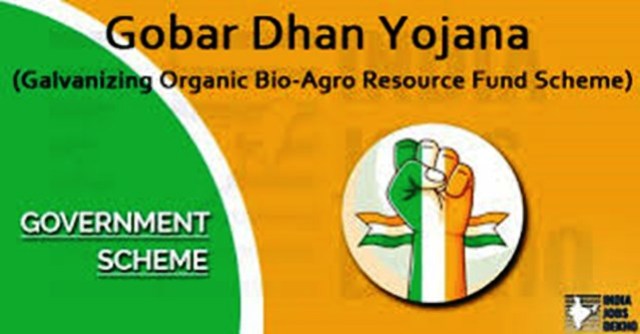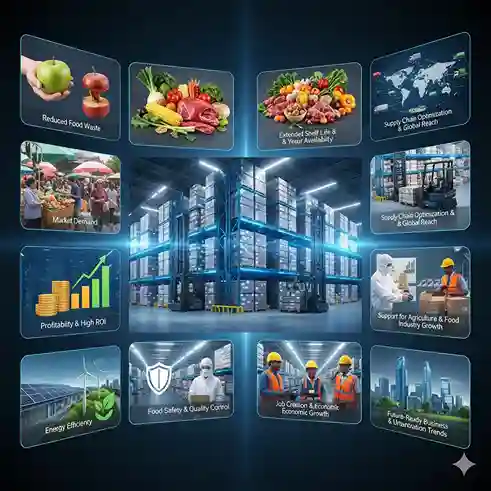Gobardhan Scheme:
By transforming solid agricultural waste (such as rice husk, paddy straw, and other solid agricultural waste) and cow dung into compost, bio slurry, and biogas, the Galvanizing Organic Bio-Agro Resource Dhan (GOBAR-DHAN) programme aims to improve the lives of villagers while ensuring cleanliness in villages and generating wealth and energy. The plan will encourage the recovery of biodegradable garbage and the transformation of waste into resources. Farmers and householders will also profit economically and in terms of resources from it. In order to keep villages clean, the GOBARDHAN initiative is anticipated to work with residents to manage solid waste safely and effectively, particularly bio-agro waste. It will concentrate on assisting villages in managing bio waste and is an essential part of SBM’s (G) ODF Plus strategy.
Visit this Page for More Information: Start a Business in Biotechnology Sector
Jal Jeevan Mission (JJM) and Swachh Bharat Mission (Grameen) Phase II are the two flagship programme of the GoI that are implemented by the Department of Drinking Water and Sanitation under the Ministry of Jal Shakti. The SBM (G) Phase II focuses on solid and liquid waste management in order to make the villages clean and to sustain the ODF status. The programme will be carried out in mission mode and will serve as a novel model of convergence across various GoI and State Government schemes and financing sectors. An essential part of SLWM is biodegradable waste management, and the Gobardhan Scheme strives to manage cow dung and other biodegradable trash in rural regions in an efficient manner.
Context:
A centralized portal on the government’s “Gobardhan” initiative has been launched by the Ministry of Jal Shakti.
Click Here to Send your queries/Contact Us
- According to the government, the Gobardhan plan of the Jal Shakti ministry can earn farmers Rs 1 lakh crore in 5 years.
About the Scheme:
The Department of Drinking Water and Sanitation, part of the Jal Shakti ministry, is responsible for implementing the Galvanizing Organic Bio-Agro Resources Dhan (GOBAR-DHAN) programme as part of the Swachh Bharat Mission Gramin-Phase 2 initiative.
Read Similar Articles: BIOTECHNOLOGY AND BIOTECH SECTOR
- The plan intends to increase farmers’ revenue by producing compressed biogas from biodegradable trash (CBG).
- The campaign intends to draw businesspeople to build CBG facilities with a community focus in rural areas.
- Gobardhan is established to maintain cleanliness in villages by converting bio-waste, such as animal waste, kitchen scraps, crop residue, and market waste to enhance the quality of life for locals. Farmers and households will profit economically and in terms of resources from this.
- To achieve community-wide collective action on Gobardhan, the Department of Drinking Water and Sanitation is collaborating with relevant Departments/ Ministries/State Governments, public and private sector institutions, and rural communities.
- By using clean fuel, enhancing village cleanliness, and enhancing health, Gobardhan will help rural residents in general and women in particular. This programme will help with biodegradable waste recovery and resource conversion, GHG emission reduction, crude oil import reduction, entrepreneurship support, and organic farming.
Objectives and Salient Features of the Scheme:
The program’s projected effects include improved rural income, cleaner villages thanks to solid waste management, and diminished environmental impact. As a result, the programme seeks to have the following effect:
- Energy: By using garbage to produce bioenergy, villages can become self-sufficient in clean energy and lessen their reliance on burning forests and other natural resources.
Using biogas or bio-CNG for cooking allows households to cook more efficiently and affordably while also saving money and time. This empowers the women of the home who would otherwise have to perform menial tasks like collecting firewood or creating dung cakes.
- Employment: Skill development and potential green jobs in areas like waste collection, transportation to treatment facilities, management of facilities, operation and maintenance of facilities, sale and distribution of produced biogas and bio slurry, etc., can benefit local youth and semi-skilled technicians.
- Organic Fertilizer: Farmers will profit from using digested sludge from biogas plants as a good supply of manure to augment chemical fertilizers.
- Sanitation: improved sanitation by the elimination of pollution sources, the connection of toilets to biogas, and the reduction of village garbage.
- Health: By minimizing waste stagnation in villages and increasing indoor air quality, which is otherwise impacted by firewood and dung cake burning, malaria and other sanitation-related diseases would become less common.
Scope of the Scheme:
GOBAR-DHAN initiative plans to fund 700 projects nationwide. 350 projects will be completed in the first half of the year as part of the scheme, and the remaining projects will be completed in the second. To accomplish efficient bio-waste management in the villages, the States may decide to construct at least one project per district or as many viable projects as possible.
Related Feasibility Study Reports: Biotechnology, Bio-Technology, Industrial Biotechnology, Biotech Sector, Industry, Biotech Projects, Enzymes Papain, Phytase, Lipase, Enzyme, Food Biotechnology, Industrial Enzymes, Vermiculture , Vermicompost , Biofertilizer, Organic Farming, Biogas
The initiative will be supported under the SLWM component of SBM-G in accordance with SBM’s recommended standards (G). According to the total number of households in each GP, the total assistance under SBM (G) for SLWM projects is capped at INR 7 lakh for GPs with up to 150 households, INR 12 lakh for GPs with 300 households, INR 15 lakh for GPs with 500 or more households, and INR 20 lakh for GPs with more than 500 households. According to the established formula, the Central and State Governments will continue to split the funding for the SLWM project under SBM (G).
Subject to the restrictions of the rules, only those Gram Panchayats that have not utilized SLWM money under SBM (G) are eligible to receive financial support under the GOBAR-DHAN scheme. States, however, will have the freedom to add funding to any GP based on the scheme’s viability through convergence with other Central/State systems.
Potential and Benefits
- Efficient management of biodegradable trash.
- A decrease in GHG emissions.
- A decrease in crude oil imports.
- Possibility for employment for the neighborhood.
- Encourage entrepreneurship
- The generation of additional revenue for farmers and the nearby village community.
- Support for organic farming.
Assistance from the Plan
The projects can be implemented using one of four models. According to GOBAR-DHAN regulations, the model-specific incentive is as follows:
- Model-A (Gram Panchayat): For a GP with homes of up to 150, 300, 500, and more, respectively, the prices are Rs. 7 lakh, Rs. 12 lakh, Rs. 15 lakh, and Rs. 20 lakh.
- Model-B (SHG Federation): For a GP with up to 150, 300, 500, and more homes, respectively, the costs are Rs. 7 lakh, Rs. 12 lakh, Rs. 15 lakh, and Rs. 20 lakh.
- For a GP with families up to 150, 300, 500, and more than 500, respectively, Model-C (Bulk Waste Generator/Entrepreneur) costs Rs. Rs. 7 lakh, Rs. 12 lakh, Rs. 15 lakh, and Rs. 20 lakh.
- Any Eligible Enterprise, Model-D: No inducement
Read our Books Here: Biotechnology, Nanoscience, Nanotechnology, Enzymes, Food Biotechnology ,Vermiculture , Vermicompost , Bio-Fertilizer, Organic Farming, Biogas
Components
- Toilets used in homes, particularly those that have been converted from unsanitary to pour-flush restrooms; Public restrooms
- public restrooms
- management of solid waste
- Public Education and IEC
Implementation
- The main emphasis and key strategy for achieving ODF objectives is behaviour change.
- The Ministry’s targeted Information, Education, and Communication (IEC) programme is employed to carry this out.
- Additionally, it advocates for gender-sensitive information, guidelines for behaviour modification, and numerous mass education initiatives.
Funding
- States will provide a minimum of 25% of the funding for all elements to match the Central Share of 75%.
- For the North East and special category States, this will be 10%.
NPCS is always available to assist you in obtaining a thorough report regarding launching a new business. Before giving you the project, our NPCS authorities will conduct extensive research on the market, its potential, and its legitimacy. You can get in touch with us as well to get opinions and advice from our staff. For additional information, visit our main page.
Click Here to Send your queries/Contact Us
See More Links:
- Start a Business in Asia
- Start a Business in Potential Countries for Doing Business
- Best Industry for Doing Business
- Business Ideas with Low, Medium & High Investment
- Looking for Most Demandable Business Ideas for Startups
- Startup Consulting Services
- Start a Business in Africa
- Start a Business in India
- Start a Business in Middle East
- Related Videos
- Related Books
- Related Projects
- Related Market Research Reports
DPP_20Art22






